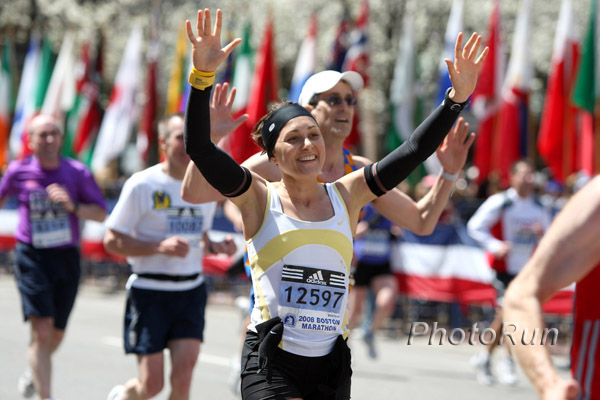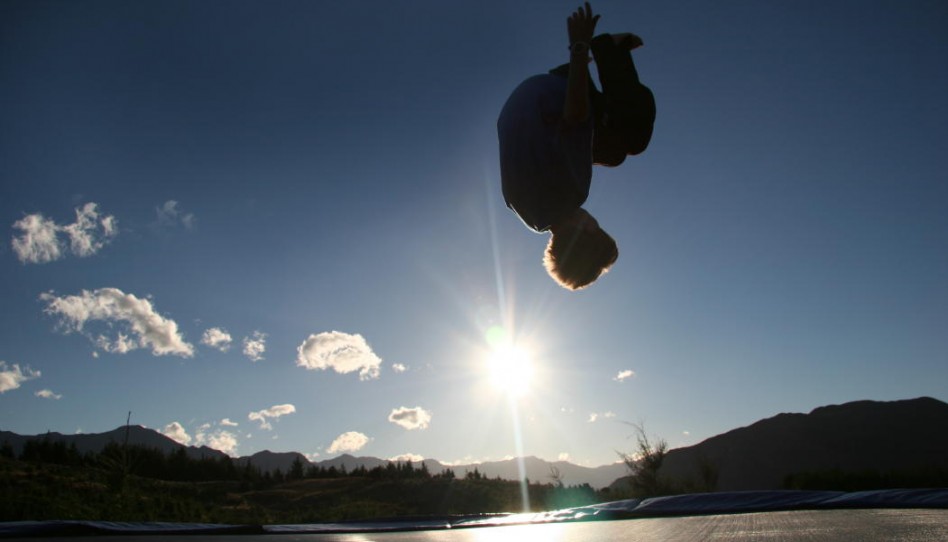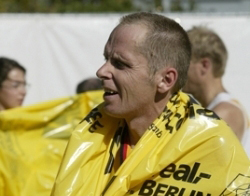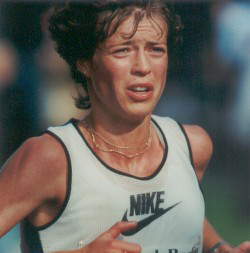Take The Magic Step® Fitness and Health Program for Young People (1): Swimming

Children have a natural desire to move. As infants they express this desire to move by raising their head, turning over and crawling around. Once they have learned how to walk, they are constantly on the move. Children have an instinct for play, and want to run, climb and throw things, all without being asked to do it. To enhance this natural desire to move and possibly allow the development of further physical activities from it, children need our support. Adults’ bad habits, however, often suppress the urge to be active. Stress, fatigue, and a lack of drive or willingness to make an effort from fathers and mothers often result in a lack of motivation for the children, too.

Take The Magic Step®’s fitness and health program for young people is designed to help encourage parents, guardians and educators to integrate physical activities, sports and movement into the daily lives of their children. We will introduce a range of sports and physical activities that support the physical and mental development of children, allow a variety in movements, and need only a little magic step to be done. Because even babies can benefit from it, we will start with swimming.
Water Ways
In the water, children can experience their senses and range of movement in various ways, almost always with little or no prodding from adults. Most children love water-the playful action in the swimming pool or in a lake. The squeaking and screaming noises children make when they are in the water are clear evidence that the youthful enjoyment of the water is universal. But apart from the fun, water splashing and swimming have many benefits. Children experience water pressure, resistance and buoyancy, and their sense of equilibrium is trained. Due to the water’s buoyancy, ligaments, tendons and joints are not strained, which is why swimming is also highly recommended for overweight children and those with joint problems. In addition, water massages the body’s soft tissues. Through different stimuli, children expand their body awareness. Swimming strengthens muscles, improves endurance, motor skills and performance, prevents poor postural habits and strengthens the immune system. And in the water, the risk of injury is extremely low.
Even when they are infants, it is important to engage your child daily in movements such as turning, pulling and sitting up while changing diapers. All these motions support the child’s first coordinative movements and the development of motor skills. Baby swimming offers a broad development of motor skills through unrestricted movements in the water. Apart from the stimuli for physical development, social contacts with the mother or the father at swimming sessions provide psychological stimuli. It has been proven that through regular baby swimming, children become more sociable later on in life, gain better body control, and have a strengthened musculoskeletal system. There are many programs for infant swimming. We would encourage you to find out about programs, taught by professionals, for your infant in your local recreation centre or swim club.
Around the age of 2 or 3, children’s movements are normally characterized by a slow pace and small range of motion, and their motions lack power. Rhythm and flow of motion are only scarcely developed. To develop their motor skills around this age, it is sufficient to give them enough space and freedom to move. The shallow water section of a pool or a lake offers this space. At this age, fun and the experience of movement count; children who dislike water will usually lose their fear.
From the age of 4 onward, children can learn the basic skills of diving, jumping, gliding and breathing in a playful manner, but they still may not be able to swim properly. Easy exercises such as floating on water – “Dead Man” – can help to get used to this new environment. Floating on water with the belly facing down and the face under water can reduce the fear of water. At the same time, children learn that they can keep themselves at the surface through small, gentle and rhythmic movements such as “paddling” with their hands and feet or first proper arm and leg movements. Through easy breathing exercises under water, like strong bubbling, children learn that they can play with this wet element and that it is enjoyable.
Around the age of 4 to 7, children complete various forms of motion and learn first combinations of movements. Coordination improves, as movements take on a more flowing quality. Movement patterns are characterized by an urge to move, growing determination and endurance.
As an introduction to proper swimming, asynchronous styles – that is, ones that use alternating sides of the body such as freestyle or backstroke – are best. In regards to motor skills, the backstroke is particularly suitable, as it is quite a natural movement and thus is the easiest to learn. In contrast, the leg movement of the breaststroke is a very unnatural movement, and coordinating this style’s different phases is very demanding. Children are usually only capable of learning this style from the age of 5 onward.
If children learn to swim before entering school, this newly gained ability increases their self-confidence and self-esteem. Kindergartens offer swimming lessons for the “big kids.” At primary schools in Germany, swimming is part of the curriculum in grade 3. If, by then, children have already been exposed to the pool, they will go to class confidently rather than be nervous. With regard to developing motor skills, grade 3 is an excellent time to begin swim lessons in school, as those skills increase particularly fast and significantly at ages 9 and 10.
Things are much different in the U.S., where physical education curriculum are determined at the state and local levels. Nearly all swim training for children, especially young ones, occurs outside of school. Despite the extra effort required, however, many parents recognize the significant benefits of their children learning to swim early in life. To find a youth swim club in your area, USA Swimming has a helpful guide on its Web page.
If they are especially talented, 6- or 7-year-olds can begin specific, competitive swim training. Age-group swimming is appealing to children in part because you can reach your full potential in competitive swimming at a very early age – successful swimmers are often as young as 16 years old. You also need very distinct motor skills for competitive swimming. Nevertheless it is important to develop a broad range of basic skills as well as the further development of all motor skills. But even without any competitive ambitions, children can train in swimming clubs. Good clubs support the sport’s competitive character but will above all ensure that children train and learn with joy and pleasure.
The later childhood years – ages 10 to 12 for girls, and 10 to 13 for boys – are characterized by a high level of motor skills. It is crucial to make use of this ideal learning age and to enhance the motor skills as well as athletic development of the child. Even if children do not pursue regular swim training, frequent visits to the swimming pool are recommended. Achieving basic endurance improves the ability to cope with physical as well as mental challenges and stress. Stamina prevents children from tiring too quickly and makes them more resistant to infectious diseases. A better ability to concentrate and to learn in class, less visits to the doctor, and a good appetite are all positive effects of swimming regularly.
Games in the Water
Basic Racing
Just as on land, you pick a starting point and finish line, and whoever reaches the latter first is the winner. As for how to cover the distance, that depends on the children’s abilities. You can walk through the water in the shallow section of the pool, you can cover the distance of one lane in freestyle or simply paddle from one side of the pool to the other on a paddle board. The number of participants is nearly unlimited; if you have a lot of children participating, relays can also be organized. If parents give their kids a fair advantage, suspenseful races are guaranteed.
Catching
One child is chosen as the “catcher“ and has to try to catch the other children.(in the US usually known as you are “IT”) If the child catches someone, that child becomes the catcher (IT). The water allows for various options: catching as a chain of catchers holding hands is just as much fun as a chase in deep water.
Mirroring
The children stand in one line at the edge of the pool’s shallow water section. The child first in line does something, and all the other ones have to imitate the action. The options are endless–stalking through the water like a stork, doing a simple somersault forward, making water fountains with your mouth, splashing water and making foam with your legs, and much more. Afterwards the child goes to the end of the line, and it is the next child’s turn to pick a different activity to be mirrored. If parents join in, it is great fun for everyone.
Ball over the Rope
A rope is put up tightly about a meter above the water’s surface. Two teams spread out evenly on both sides of the rope. Players try to throw a ball over the rope so that it cannot be caught by the other team and hits the water. The team on the other side tries to catch the ball. If they fail to do so, the team throwing the ball receives one point. If they catch the ball it is their turn to try to hit the water on the other team’s side.
Slippery Ball
All the children line up, each about a meter apart from the other. The task is to pass on a ball to the back. The catch: the ball has to be passed through the legs. If you don’t watch out, the ball slips out of your hands and shoots up to the water’s surface, and that child is out. If the ball reaches the last child in the back, the child runs quickly to the front and passes the ball backwards again.
Blow Ball
You have to be a real “wind maker“ for this one! Each child gets a table tennis ball and puts it in front of him at a distance where he can reach it when blowing at it. The child who is able to reach the other side of the pool first through blowing is the winner. Touching the ball with face or hands is not permitted!
Dolphin Ball
This is a game for experienced swimmers. Again the ball has to be moved from one side to the other. This time, however, this is to be achieved through pushing the ball with the head. There are also direct opponents in this game as two players or two teams compete directly and try to cross each other’s paths. Those who push the ball with their hands or play unfairly or even foul their opponents have to return to the starting side of the pool. The winner is the one who manages to get his ball–or all the balls of the team–to the other side of the pool first.
- Posted March 5, 2007
© Copyright 2007-2024 by Take The Magic Step®. All Rights Reserved.




